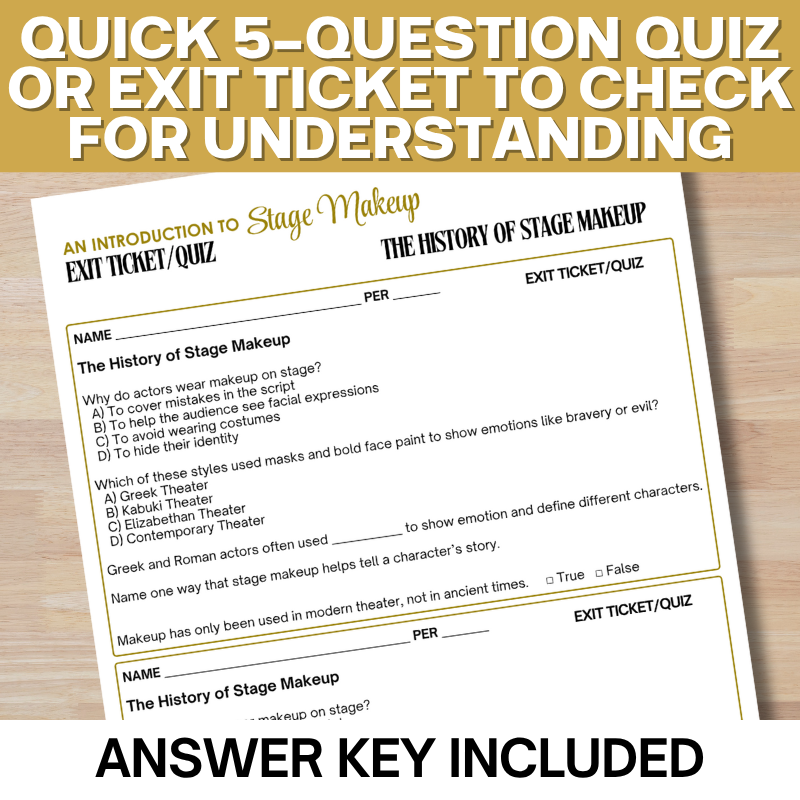 Image 1 of 4
Image 1 of 4

 Image 2 of 4
Image 2 of 4

 Image 3 of 4
Image 3 of 4

 Image 4 of 4
Image 4 of 4





Introduction to Theater Chorus and Choral Reading Lesson Slides, Activity - Grades 4-6
Looking for a unique and engaging way to introduce theater history and performance skills to your upper elementary students? This ready-to-use mini-unit explores the power of the group voice in storytelling—through both history and hands-on practice!
Students will learn how different cultures have used the chorus to bring stories to life on stage, from Ancient Greece to modern musical theater. After exploring how the chorus has been used around the world—including Greek Theater, Japanese Noh, African storytelling, and more—students work in small groups to prepare and perform their own choral reading as a modern-day ensemble.
Looking for a unique and engaging way to introduce theater history and performance skills to your upper elementary students? This ready-to-use mini-unit explores the power of the group voice in storytelling—through both history and hands-on practice!
Students will learn how different cultures have used the chorus to bring stories to life on stage, from Ancient Greece to modern musical theater. After exploring how the chorus has been used around the world—including Greek Theater, Japanese Noh, African storytelling, and more—students work in small groups to prepare and perform their own choral reading as a modern-day ensemble.
What’s Included:
Student-friendly informational article “One Story, One Voice: The Power of the Chorus in Theater”with comprehension questions
Full slide presentation with images and embedded video examples of Greek Chorus, Noh Theater, and modern musicals
10 choral reading scripts designed for Grades 4–6
Choral Reading Planner (group planning worksheet with voice styles, line assignments, and sound effect planning)
Complete teacher materials: lesson summary, learning objectives, pacing guide, preparation tips, and adaptations
Who It’s For:
Upper elementary teachers (Grades 4–6)
Theater, drama, or performing arts classes
ELA teachers looking to add creative performance to fluency practice
Sub plans, enrichment units, or end-of-term projects
Any teacher wanting to engage students in group reading and storytelling
Estimated Time: 3–5 class periods (45–60 mins each) with flexibility to extend or adapt for deeper discussion or follow-up projects.
Whether you're a drama teacher, ELA teacher, or just a fan of performance-based learning, this unit gives your students the chance to work as a team, explore global theater traditions, and bring stories to life—together.
Why Teachers Love It:
Blends theater history with interactive performance
Easy to teach with print-and-go resources
Encourages collaboration, creativity, and oral fluency
Works for both ELA integration and drama classes
Clear structure allows for student voice and choice without overwhelming them
Includes multiple differentiation options and extension ideas (including memorization!)
Learning Objectives:
Students Will:
Discover how chorus and ensemble work is used in global theater traditions
Learn the difference between music chorus and theater chorus
Practice speaking clearly, with expression and rhythm
Collaborate to plan and perform a choral reading
Reflect on their performance and teamwork





















